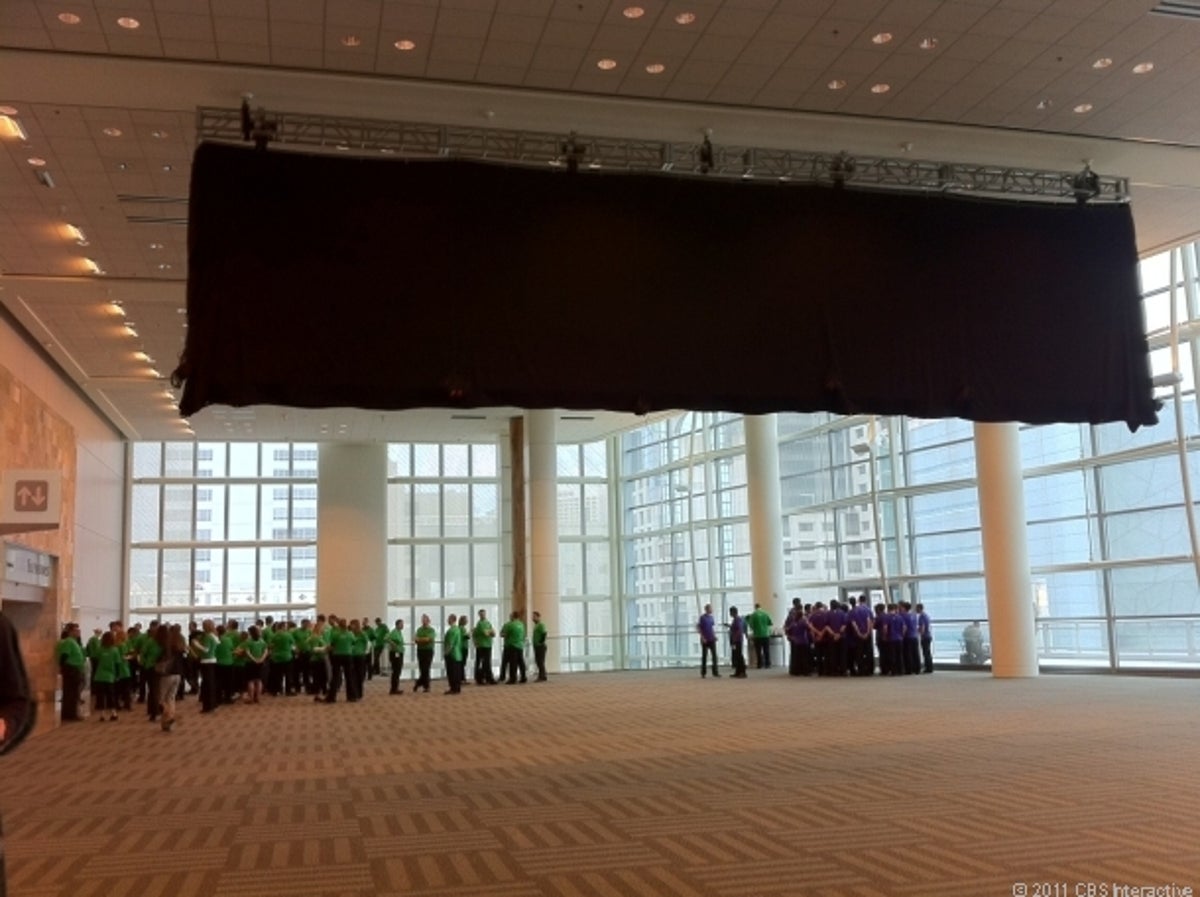Apple's 'One More Thing' retrospective
As speculation starts to fly about an unannounced product at WWDC 2011, CNET takes a look back at surprise products that have been unveiled during Apple's "One More Thing" segment.

One More Thing
WWDC 2011 has kicked off in San Francisco, and Apple CEO Steve Jobs took the stage to talk OS X Lion, iOS 5, and iCloud. However, the company appears to have kept one announcement quiet as a covered banner hangs in the Moscone Center, throwing conference attendees into a tizzy over what might be unveiled as Apple's "one more thing." The answer is at the end of this gallery, but before we reveal the answer, we thought it would be cool to look back at some of the more memorable "one more thing" or "one last thing" announcements that Apple has dropped in our laps over the years. Take a look here.
AirPort Base Station - 1999
Along with announcing the original iBook at the Macworld Expo in 1999, Apple and Steve Jobs added wireless connectivity to its notebooks with the introduction of the AirPort Base Station and AirPort Card.
(Sources: Cult of Mac, Mac Life, Wikipedia)
G4 Cube - 2000
The G4 Cube was unveiled as "one more thing" after Mac OS X at the Macworld Expo 2000 in New York. Designed by Apple designer Jonathan Ive, the G4 Cube was the company's attempt at a compact-based computer. However, an expensive price tag and quality issues with early units led to a lackluster performance in terms of sales. Despite a couple of attempts to revive the line, the Cube was eventually shelved.
PowerBook G4 - 2003
Two years after releasing the titanium PowerBook, Steve Jobs took the wraps off the aluminum-based 17-inch and 12-inch PowerBook G4 at the Macworld Expo in San Francisco. The 17-inch model featured a 1GHz G4 processor and 1GB of L3 cache, a GeForce 440 Go graphics hardware, and a FireWire 800 port.
PowerMac G5 - 2003
The PowerMac G5 was leaked ahead of WWDC 2003 when someone got a little trigger happy and posted specs about the desktop computer on Apple's Web site days before the keynote address. Jobs joked during the address that it was a case of "premature specification."
iPod Shuffle - 2005
Designed to be an ultracompact and affordable version of the iPod, Apple released the flash-based iPod Shuffle in 2005. The player came in two models--512MB or 1GB--and lacked a display but was simple to use. You can read our original review here.
15-inch MacBook Pro - 2006
During Macworld Expo 2006, Steve Jobs announced the company's first Intel-based computer, the iMac Core Duo, and as one more thing, the MacBook Pro. The line of laptops replaced the company's PowerBook G4 series and also used an Intel core.
iPod Touch - 2007
Launched at the "Beat Goes On" event on September 5, 2007, the iPod Touch was a music and video player, PDA, mobile Web browser, and gaming handheld all rolled into one. It was a beautifully designed and versatile product, but its expensive price tag made us wince.
DRM-free iTunes - 2009
With Steve Jobs on medical leave, Apple's Senior Vice President Phil Schiller took stage at Macworld 2009 to unveil the new 17-inch MacBook Pro, iLife and iWork '09, and as one last thing, DRM-free iTunes.
iPod Nano (fifth generation) - 2009
Apple not only injected its fifth-generation of iPod Nano players with some bold color, but it also added a video camera, an FM radio, and voice recording. The new Nanos were shown off during the Apple Music Event in September 2009.
Second-gen Apple TV - 2010
Sharing some stage time with the newest generation of iPods, Apple introduced the second-gen Apple TV in September 2010 that was both smaller and cheaper.
MacBook Air 2010
Apple fans probably remember the first time Steve Jobs removed the first-gen Macbook Air from a manila envelope during Macworld Expo 2008. The ultrathin laptop was a sight to behold for sure, but it was limited in power and features, and thus limited in its appeal. However, the MacBook Air 2010--announced at the Back to Mac event in October 2010--made significant improvements to its predecessor, though at a cost.
iTunes Match - 2011
Though some were holding out hope for the iPhone 4S or iPhone 5, the "one more thing" announcement at WWDC 2011 was iTunes Match, which allows users to store their "entire collection," including music ripped from CDs, on iCloud servers for $24.99 a year.

